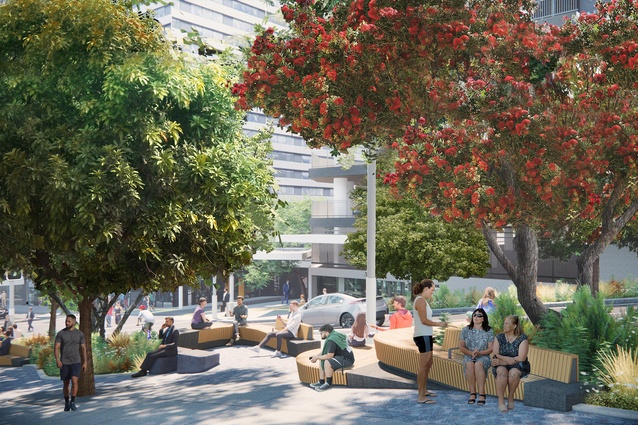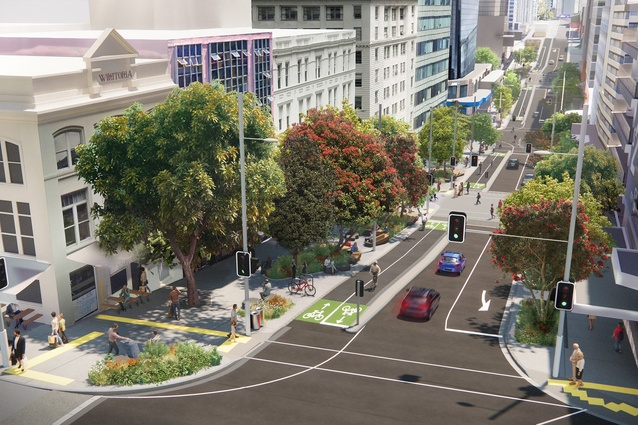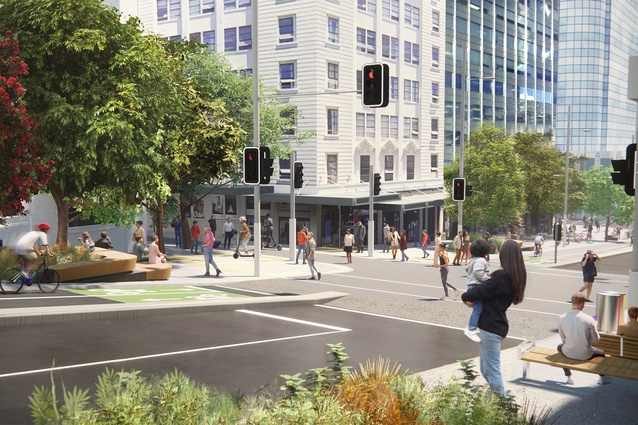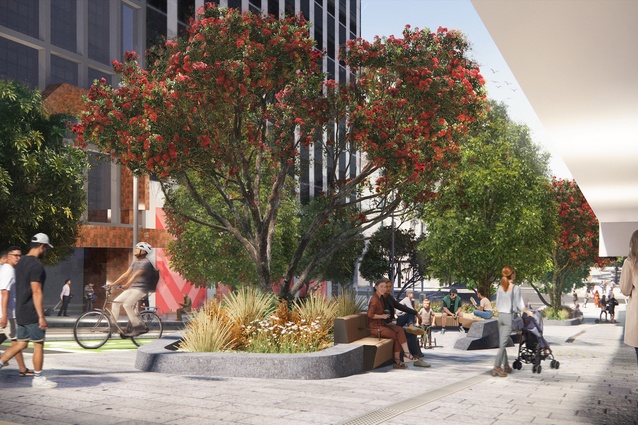Construction process for Te Hā Noa begins 11 April
Te Hā Noa, a renewed Victoria Street, is the next big project in Auckland Council’s Midtown Regeneration programme.
Since it first made the pages of the City Centre Masterplan (CCMP) in 2012, Te Hā Noa has been described in different ways: linear park, tree-lined avenue and ‘the new backyard’.
Last week, the green light was given by the council’s Governing Body for construction of the eastern section of Te Hā Noa — from Elliott Street to Kitchener Street — to begin.
Head of City Centre Programmes for Auckland Council, Jenny Larking, says it will be a historic day when the construction process begins on 11 April.
Auckland Council say Te Hā Noa will be a flagship for contemporary urban design, putting people at its heart. It is a pivotal feature in the CCMP — re-endorsed in 2020 — the blueprint for the city centre’s ongoing renewal. Jasmax landscape architects will be leading the design of the city’s new linear park.
The name Te Hā Noa was gifted by mana whenua, evoking a sense of freedom and imagining a place where people can take a breath and absorb the sights and sounds around them.
This midtown section of Te Hā Noa will become a high quality accessible public space to support the increasing number of people arriving at Victoria Street from Te Waihorotiu Station, through the northern portal, when the station opens.
“The design of Te Hā Noa supports the way we know people want to live, work and spend leisure time. They want fast and seamless access to everything — jobs, entertainment, restaurants, theatres, parks and universities,” says Jenny Larking.
“It’s important for us to build an Auckland that is internationally competitive, a city that attracts the world’s top talent. We want people to aspire to live and work here, so our streets and spaces are designed to offer healthy and attractive lifestyles,” she says.
Auckland Transport’s Programme Director City Centre, Graeme Gunthorp is excited about the ways Te Hā Noa will allow Auckland to maximise the potential of the City Rail Link.
“Te Waihorotiu Station is predicted to become the busiest train station in New Zealand, with thousands of people using it and flowing out onto Victoria Street every day.
“We need to make it as easy as possible for people to get to wherever they are going. Wider footpaths and a protected cycleway will allow safe and effortless connections between walking, cycling and public transport,” says Gunthorp.
“Our vision for the city centre is for it to be a place that celebrates Auckland as a driver of positive change and placemaking. Te Hā Noa will become a place that is welcoming and inclusive, helps restore our biodiversity and ecology and connects our communities so that they can truly thrive,” says Simon Oddie, City Centre Priority Location Director for Eke Panuku.
Greening our city
“The magic will be in the trees,” says Larking.
Victoria Street will become a tree-lined walking street with one lane of cars in each direction, greater visibility of Māori art and design and more places for people to sit and relax.
More than 20 native trees will be planted along the edges of Te Hā Noa, adding to the city centre’s expanding urban ngahere (forest), providing shade and shelter, cooling the city and soaking up carbon.
The trees lining Te Hā Noa will be planted in special tree pits, excavated and backfilled with a combination of organic and structural material keeping the tree roots safe from heavy equipment and vehicles while allowing them to flourish.
The process
Auckland Council has worked closely with City Rail Link, Watercare, Auckland Transport and Vector to ensure there is careful planning, coordination and management of a range of factors, including works above and below ground.
“Sequencing construction to minimise the impact for neighbouring businesses and residents is central to our planning for the delivery of Te Hā Noa,” says Larking.
“We have paid particular attention to working collaboratively with our partners to make sure we don’t cause any more disruption than we absolutely need to. Our plan is to deliver the street in chunks, minimising impact while optimising efficiency,” she says.
Auckland Council’s project team predicts that Aucklanders will be able to see the first part of Victoria Street, in its new form, by the end of 2023.
And for more information visit progressakl.co.nz/midtown













